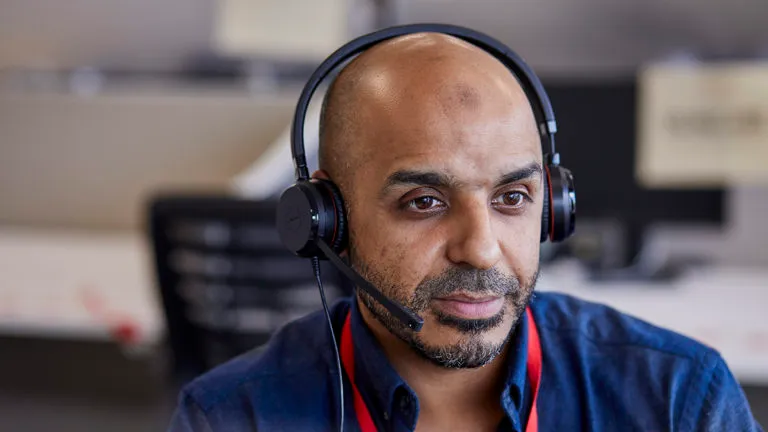Aligning outcomes across a multi-channel housing advice service
Published: by Jane Kelly

Our digital team have been working to develop a triage system to improve user access to Shelter’s advice services. In previous blogs, we shared what we learnt from the discovery phase of this project. This blog explores our goals, challenges and next steps.
When thinking about designing and implementing a triage solution, it is important that we remain agnostic about the channel we are designing for. The routes into advice are not always digital and we need to create a fair, inclusive, and accessible system across our housing advice services.
We want to design a triage system ethically and we have developed core goals that align with that approach. This underpins our strategy towards prioritising people in emergency need, so we design inclusively across all channels. We take an outcome-based approach when working collaboratively across different teams, rather than focusing on the output or the solution.
To meet these principles, we’ve developed the following goals and activities.
Core goals and activities
Design, iterate and validate a core triage user journey across channels to create a consistent service offering
- define priority levels of need so there is a consistent approach to assessing and tracking needs across remote advice services
- prototype and user test a core triage design pattern across channels to validate decisions and support effective implementation
- align evidence and user needs with IT procurement to build in requirements for a technical solution and plan implementation
Create an inclusive, accessible and flexible triage system that is fair for all
- users’ access to digital technology, or their skillset, should not affect how they are prioritised for advice
- any new platforms procured as part of the IT infrastructure to deliver a new solution must meet the minimum accessibility standards required
- improving accessibility and inclusion is embedded in working practices throughout the product development life cycle
Optimise Customer Relationship Management (CRM) system interactions so users are not forced to repeat their stories when moving across channels
- understand if, and how, our CRM set up may be having a negative impact on staff and client experience, and recommend any improvements
- ensure data can be securely transitioned across channels and integrated with CRM, so users do not have to repeat their story
Challenges
Bringing everyone on this journey
Supporting colleagues within Shelter to understand our approach and ways of working is an ongoing journey. Some team members are embracing learning by doing: many have observed user testing sessions and have collaborated in design workshops and joined our agile events. Others who are completely new to agile and service design approaches are still adapting and learning why we work this way.
As we focus on the problems users are experiencing, it can feel unbalanced to teams who have worked hard to meet business requirements, so it is important we include people in our process and ensure it is truly collaborative. We need to have a safe space to challenge each other’s assumptions.
Accessibility
There seems to be a wider sector issue around accessibility guidance for infrastructure design, or IT platform procurement processes. There is a wealth of knowledge and good practice to lean on when it comes to the development of frontend user experiences, but the same isn’t true for backend systems, so we have built this opportunity as a goal into a more integrated approach across our channels.
Measuring success
The metric we aim to improve is the number of high-priority cases successfully getting through to speak to an adviser. Increasing the number of people who are empowered by the information and advice they receive across our channels is our north star – but this is very difficult to measure longer term without lots of investment.
Next steps
The digital product team have successfully completed one round of user testing on a core triage webchat prototype. We tested with different audiences, including people with lived experience of homelessness or other housing issues. We’re now running a second round of testing, after iterating designs based on feedback. The team are also completing some internal CRM user research that will build the foundations for transitioning data across channels.
Interested in finding out more about this work? Read our blog on the discovery phase of this project, or see our digital framework to learn more about our approach to user-centred design.